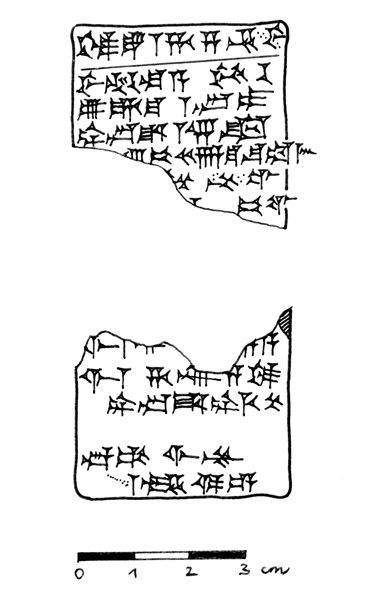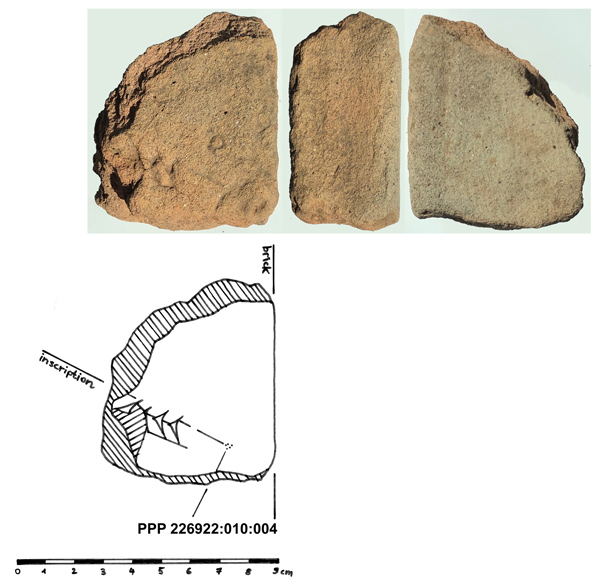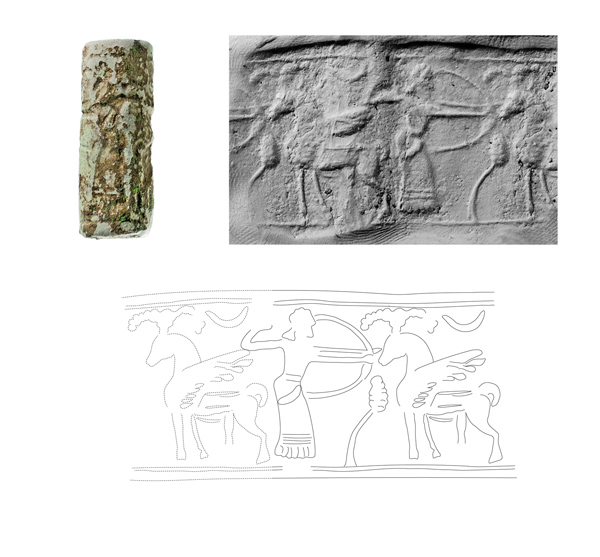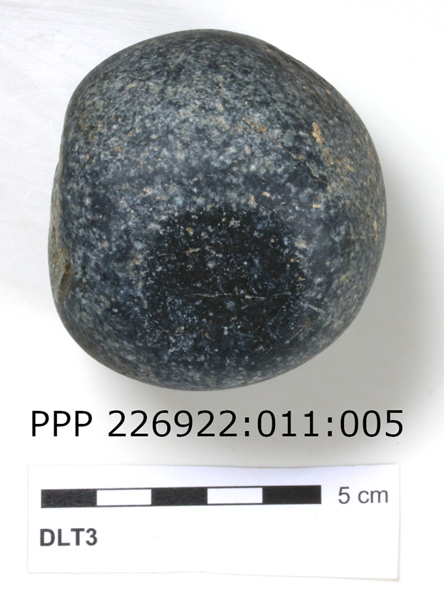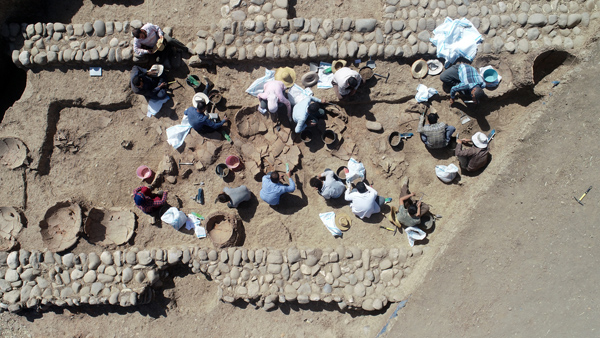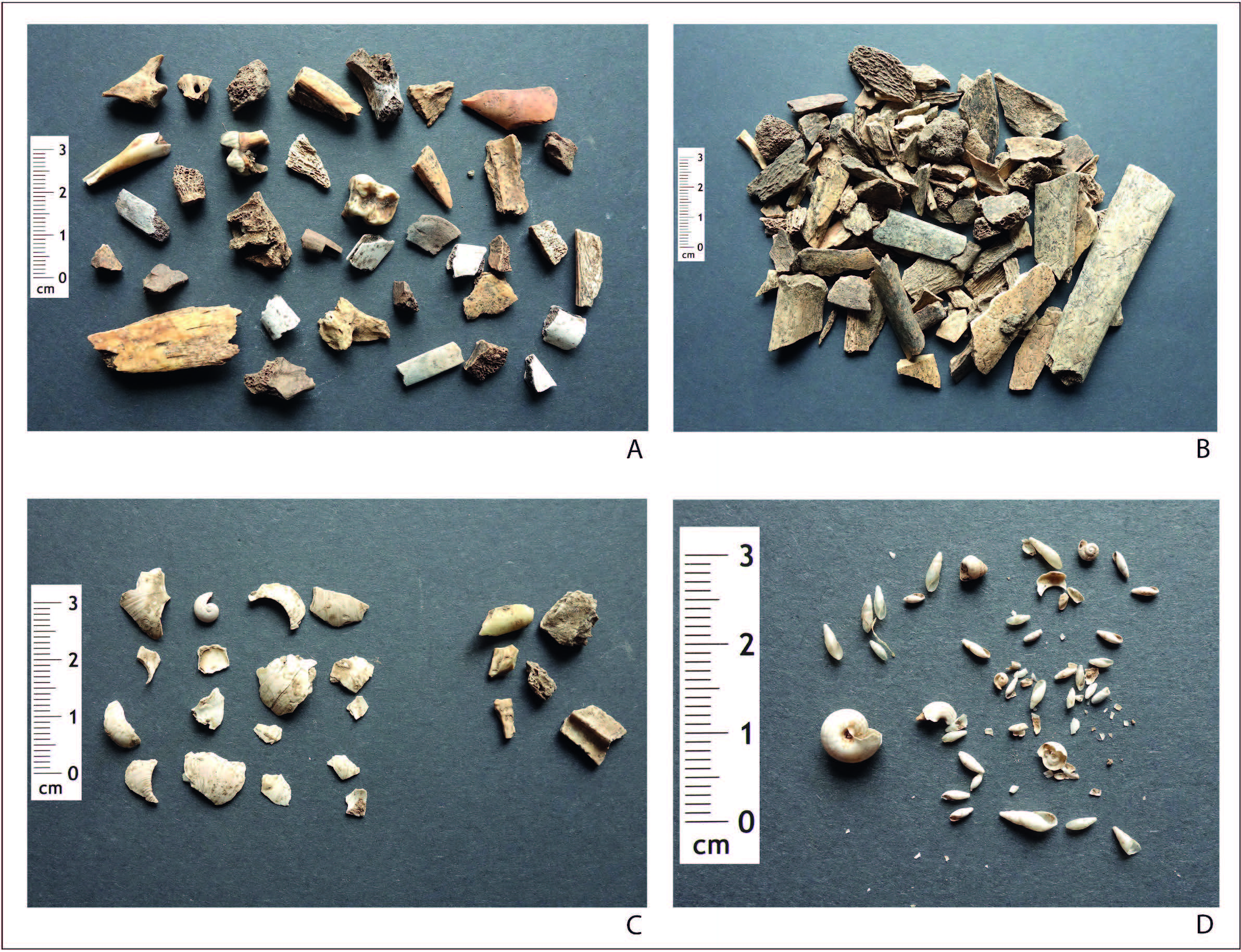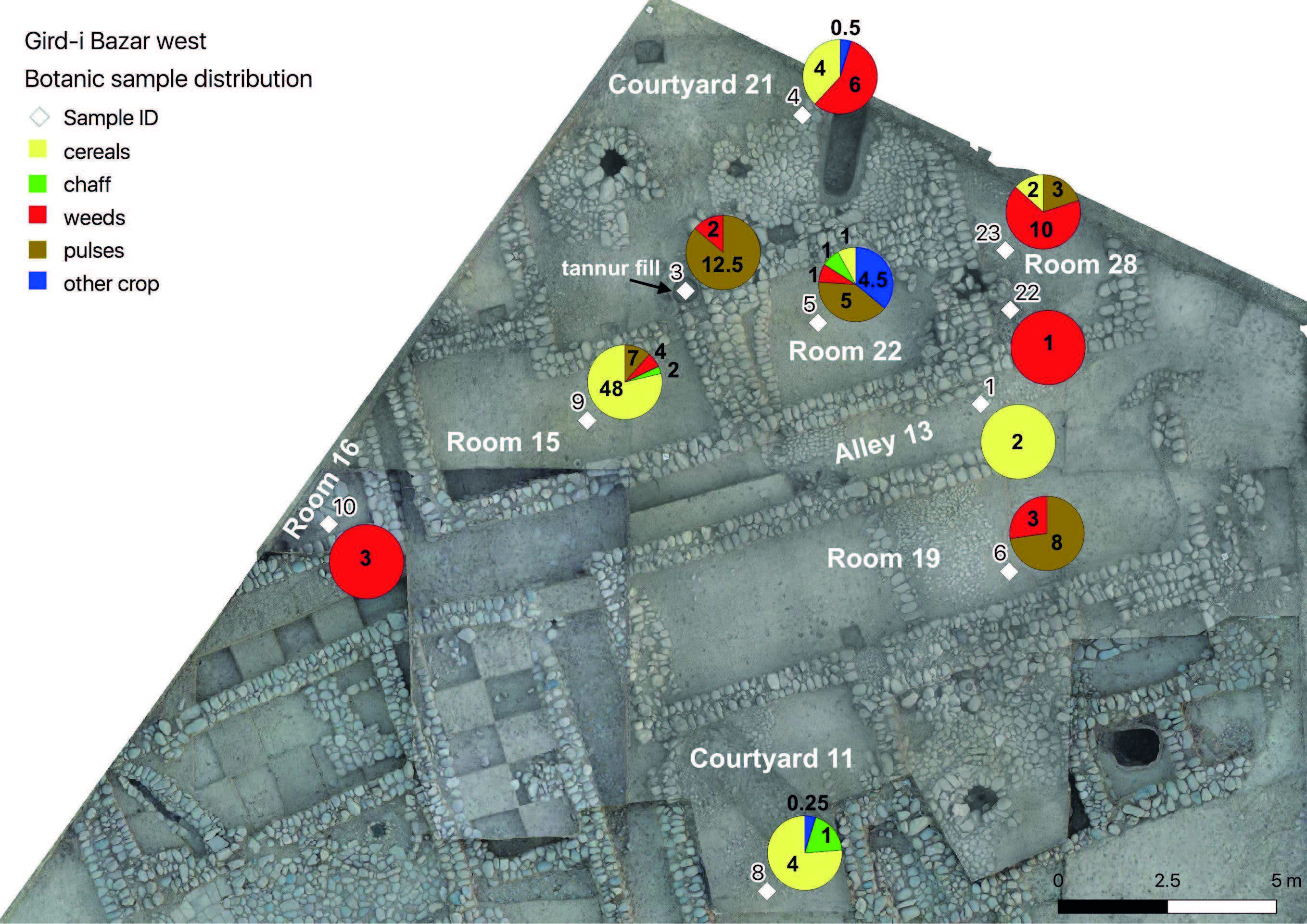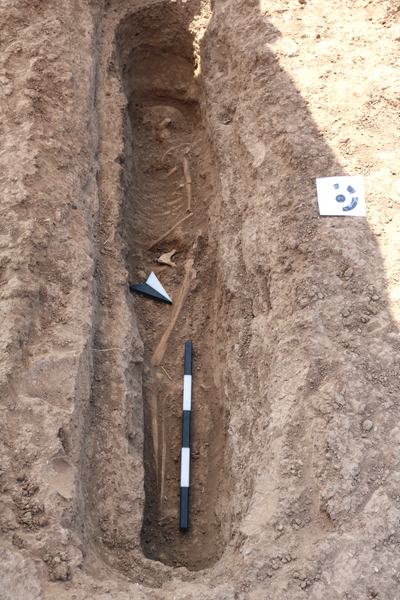Finds with inscriptions
Author: Janoscha Kreppner | last update: 2023-01-03
Neo-Assyrian cuneiform tablet fragment
In 2013, a farmer growing chickpeas on the western slope of Qalat-i Dinka found a burnt clay tablet fragment, which was given to a local employee of the Sulaymaniyah Directorate of Antiquities. In February 2015, Barzan Baiz Ismail, now director of the recently established Raperîn Directorate of Antiquities, showed this fragment to Karen Radner, who identified it as a Neo-Assyrian purchase deed for a female slave from 725 B.C. (reign of Shalmaneser V). Since a subordinate of the palace herald is named as a witness, she interpreted this as an indication that Qalat-i Dinka should be located in the hitherto only vaguely localizable province of the palace herald, a frontier region with a pronounced defensive function, founded during the reign of Shalmaneser III (r. 859-824 B.C.).
Further Reading:
- 4P1, B1 [10MB]
- https://epub.ub.uni-muenchen.de/26267/1/Karen_Radner_A_Neo-Assyrian_Slave_Sale_Contract%20.pdf
Fragmentary brick with Neo-Assyrian cuneiform inscription
During the 2018 autumn campaign, a fragment of an inscribed fired brick with the remains of an Assyrian cuneiform inscription was found in DLT-3, in a later construction phase fill deposit. Karen Radner interprets it as the remains of a brick inscription of the Assyrian king Shalmaneser III.
Further Reading:
- 4P4, I [124MB]
Small Finds
Author: Janoscha Kreppner | last update: 2023-01-20
The small finds processing is headed by Andrea Squitieri, with special investigations of seals by Anja Fügert, of fibulae by Friedhelm Pedde, and of arrow heads by Anja Hellmuth Kramberger. While mainly pottery and stone tools have been found in the lower town, graves in QID-1 were originally richly equipped with valuable finds. They were specifically targeted by the looters. Therefore, finds could be recovered in their original context in only a few graves. A large number of finds originate from the fills of looting pits, making it impossible to assign them to specific burials [4P5, E1 (172MB)]. Although we must assume that much was taken by the looters, the preserved find repertoire nevertheless includes one completely preserved bronze bowl (of a diagnostic shape that dates the object to the late 8th century BC or later) [4P5, E1.3.2 (172MB)], five fibulae (some of which are typical 7th century shapes) [4P5, E2 (172MB)], three cylinder seals [4P5, E3 (172MB)], with designs popular also elsewhere in the Assyrian Empire, and arrowheads [4P5, E4 (172MB)]. These finds indicate the presence of elites in Qalat-i Dinka.
Further Reading:
- 4P5, E [172MB]
Stone Tools
Author: Janoscha Kreppner | last update: 2023-01-03
An important group of small finds found in every settlement area of the Dinka Settlement Complex is stone tools. This category includes querns, handstones, pounders, perforated stones, pebble mortars, spheroid pebbles (possibly weights), whetstones, spindle whorls, and stone vessel fragments. A spacial functional analysis has demonstrated that, at Gird-i Bazar, the use of some stone tools such as pebble mortars, pestles, polishers, and pestle/polishers can be linked to pottery production.
Further Reading:
Pottery
Author: Janoscha Kreppner | last update: 2023-01-03
The pottery department is headed by Jean-Jacques Herr, with the assistance of Hero Salih Ahmed, Abdullah Bakr Ahmed, Jemal Jameel Assad, and Abubakir Qasim.
Our Ceramic processing follows the chaîne opératoire methodology. The macroscopic fabric definition was accompanied and updated by a systematic sampling of selected ceramic sherds for petrographic analyses. Based on the nature and grain size of both the clay raw material and the added mineral or vegetal temper, seven fabrics were distinguished, all composed of local clays. A coiling technique was applied to form the vessels. Smoothing was executed both without Rotative Kinetic Energy (RKE) and on the slow wheel, and planing was also used to shape vessels. Techniques to finish vessels included barbotine, slip, burnishing, and leather hard brushing/scraping. Decorations could be stamped or modelled.
Carinated bowls, hemispherical bowls, handled beakers, ovoid cooking pots, and small necked jars were formed with coils, shaped on the slow wheel, and then burnished. Lids, trays, and large storage jars were formed with larger coils and sometimes burnished on their outside walls.
Further Reading
Fauna – Archaeozoology
Author: Janoscha Kreppner | last update: 2023-01-20
Archaeozoological investigations were conducted by Tina Greenfield and Anja Prust. The analyses in 2019/2020 included faunal material from Gird-i Bazar (GIB), from Qalat-i Dinka (QID), and the two excavation areas in the Lower Town (DLT2 and DLT3). The total faunal assemblage comprises 10,562 specimens, including the bones and teeth of mammals, several fragments of molluscs, a few bird bones and a few remains of amphibians, fish, and crustaceans.
Domestic mammals dominate, while wild species of mammals, birds, and fish were of little importance as a source of food. Sheep, goat, cattle, and pig are the most frequent taxa. All of these species were exploited for food. The exploitation of secondary products (milk, wool, hair etc.) and the exploitation of cattle as work animals in agriculture and for transport can be suggested, based on the presence of older individuals far beyond the optimal slaughter age. Sheep, goats, and cattle were herded outside the settlement, as can still be seen today. It is possible that pigs were kept within the settlement.
Further Reading
Flora – Archaeobotanics
Author: Janoscha Kreppner | last update: 2023-01-20
The archaeobotanical investigations are in the hands of Melissa Rosenzweig. 32 archaeobotanical samples were selected from the eastern and western areas of Gird-i Bazar, DLT2, and DLT3 for further examination. Altogether, a total of 1,040 botanical remains were recovered from over 1,404 litres of soil. The data from the archaeobotanical analyses indicate that the inhabitants of the Lower Town grew and relied on a typical Near Eastern crop package of cereals and pulses supplemented by grapes, figs, and millet. They brought the Bora Plain under cultivation and utilised the steppic foothills and forested slopes of the Zagros Mountains, which would have been ideal landscapes for activities like livestock grazing, wild plant gathering, and wood collection. Spatial analysis suggests that the occupants of Dinka Lower Town stored, prepared, and ate crops in indoor rooms and reserved open, outdoor areas for crop processing, while sample-specific information opens up the possibility that mixed-cropping and wine pressing practices occurred at the settlement.
Further Reading
Phytholiths
Author: Janoscha Kreppner | last update: 2023-01-03
The evaluation of the phytoliths is being carried out by Fatemeh Ghareri. 500 samples were collected from the Dinka Settlement Complex (campaigns 2015 to 2019). These were taken from contexts with the potential for yielding a high number of phytoliths (e.g., fills of ovens, rubbish pits, burnt layers), and also from floors of rooms, alleys, and courtyards. 150 – 200 Samples have been selected for complete analysis. The complete analysis of 11 samples from Gird-i Bazar (=GIB) and DLT has been completed. The phytolith assemblages from Gird-i Bazar suggest that the environments where plant exploitation took place were marshy and wet, with a cool, temperate climate. They also be suggest that the inhabitants of the site cultivated marshy plants along the edges of the fields and/or collected them from the surrounding areas. Samples from Courtyard 11 at Gird-I Bazar support the presence of livestock at the site, and in DLT 2 Alley 58 the presence of pastoral activities is supported by the high percentage of sedge cones and cyperaceae. The analysed samples are characterised by the absence of wheat phytoliths; so it could be that wheat was cultivated with rainwater only. The results of samples from DLT, which has been interpreted as a complex of buildings where storage facilities were also present, suggest the use of baskets, possibly for storage, and floor matting. It is also plausible that reeds were used as construction material at DLT2.
Further Reading
- 4P5, G [172MB]
Human Remains
Author: Janoscha Kreppner | last update: 2023-01-03
Anthropological studies were conducted by Kathleen Downey. These included the Iron Age individuals in the well of Building I at Gird-i Bazar and from Qalat-i Dinka (2017-2018 campaigns), as well as the buried individuals of the Sasanid cemetery at Gird-i Bazar.
Further Reading
- 4P4, F [124MB]; 4P4, E.6.2 [124MB]; 4P4, D3.2 [124MB]; 4P3, D19.5 [180MB]; 4P3, H [180MB]; 4P2 ; 4P1, D1 [10MB]
